Is Balsamic Vinegar Vegan?
Yes, balsamic vinegar is generally considered vegan. Traditional balsamic vinegar is made from grape must, which is the freshly pressed juice of grapes, and it goes through a fermentation and aging process.
The grapes used in balsamic vinegar production are typically not processed using animal products. However, it’s always a good idea to check the label or contact the manufacturer to ensure that no animal-derived additives or processing agents have been used in the specific brand of balsamic vinegar you are considering.
What is Balsamic Vinegar and How is it Made?
Balsamic vinegar is a type of vinegar that originates from Italy. It is known for its distinct sweet and tangy flavor. Traditional balsamic vinegar is made from grape must, which is freshly crushed grape juice, typically from Trebbiano grapes. The process of making balsamic vinegar involves the following steps:
Pressing
Grapes are crushed to extract their juice, including the skins, seeds, and stems. This juice is called “must.”
Cooking
The grape must is slowly cooked over low heat to concentrate the flavors and reduce its volume. This process helps in caramelizing the sugars present in the grape must.
Fermentation
The cooked grape must is then transferred to wooden barrels, often made from oak, cherry, chestnut, or mulberry. Natural yeasts present in the environment initiate the fermentation process. This step can take several weeks to months.
Aging
After fermentation, the vinegar is aged in a series of smaller barrels made of different types of wood. This aging process can span from a minimum of 12 years to even several decades. During aging, the vinegar absorbs the flavors from the wooden barrels, resulting in its distinct taste.
Blending
Over the years, the vinegar is periodically transferred to smaller barrels made of different wood types to achieve a balanced and complex flavor profile. The barrels are arranged in a unique system known as a “batteria.”
Bottling
Once the desired taste is achieved, the balsamic vinegar is bottled and ready for consumption.
It’s important to note that traditional balsamic vinegar undergoes a lengthy and artisanal process, resulting in a premium product with a rich, syrupy consistency. However, commercially produced balsamic vinegar may follow a different, quicker process that involves the addition of wine vinegar and other ingredients to replicate the traditional flavor.
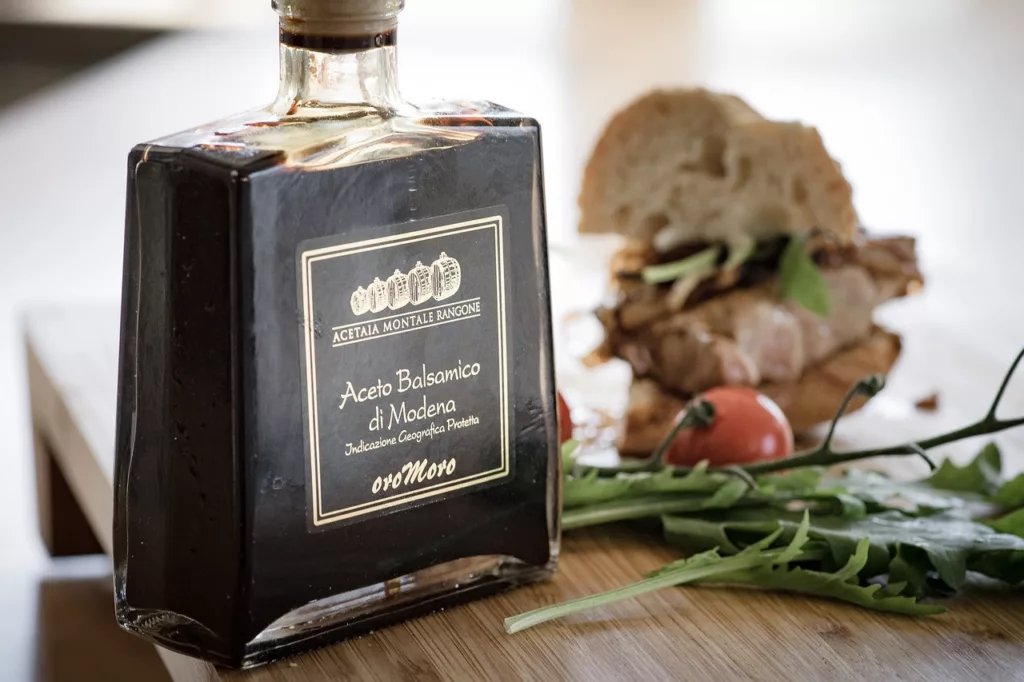
Types of Vinegars
There are several types of vinegar available, each with its own distinct characteristics and production methods. Here are the main types of vinegars and their differences:
Balsamic Vinegar
Balsamic vinegar has a sweet, tangy flavor and a rich, syrupy texture. Made from grape must, it undergoes lengthy fermentation and aging. Traditional balsamic vinegar ages for at least 12 years, creating a complex flavor. Commercial versions blend grape must with wine vinegar.
White Vinegar
White vinegar, or distilled vinegar, is made from fermented ethanol from grains or starches. It’s clear and sharply acidic. Often used for pickling, preserving, and cleaning due to its high acidity.
Red Wine Vinegar
Red wine vinegar is made by fermenting red wine. The second fermentation turns alcohol into acetic acid. It has a mild to moderately acidic taste, ideal for salad dressings, marinades, and sauces.
Apple Cider Vinegar
Apple cider vinegar comes from fermented apple cider. The natural sugars convert to alcohol, then ferment into vinegar. It has a fruity, tangy flavor, perfect for cooking, dressings, and home remedies.
Rice Vinegar
Rice vinegar, or rice wine vinegar, is made from fermented rice wine. It’s milder and slightly sweet compared to other vinegars. Commonly used in Asian cuisine, especially for sushi rice, marinades, and dipping sauces.
Malt Vinegar
Malt vinegar is made from malted barley, featuring a strong, malty flavor. It’s a staple in British cuisine, often used as a condiment for fish and chips.

Comparing Different Types of Vinegar: A Quick Guide
Vinegar comes in many varieties, each with unique flavors and uses. This chart highlights the main types of vinegar, their flavor profiles, best uses, and main ingredients. Whether you’re cooking, pickling, or making salad dressings, this guide will help you choose the right vinegar for your needs.
| Type of Vinegar | Flavor Profile | Best Uses | Main Ingredients |
|---|---|---|---|
| Balsamic Vinegar | Sweet, tangy, rich, syrupy | Salad dressings, glazes, reductions, drizzling | Grape must |
| White Vinegar | Sharp, potent | Pickling, preserving, cleaning, baking | Grain alcohol |
| Red Wine Vinegar | Mild to moderately acidic, tangy | Salad dressings, marinades, sauces | Red wine |
| Apple Cider Vinegar | Fruity, tangy | Health tonics, salad dressings, marinades | Crushed apples, sugar, yeast |
| Rice Vinegar | Mild, slightly sweet | Sushi rice, salad dressings, sauces, marinades | Fermented rice |
| Malt Vinegar | Strong, malty | Fish and chips, pickled vegetables, sauces | Malted barley |
| White Wine Vinegar | Sweet, mild | Salad dressings, condiments, sauces, marinades | White wine |
| Red Rice Vinegar | Tart, salty | Chinese dishes, condiments | Fermented red rice |
| Champagne Vinegar | Floral, sweet | Quick pickles, salad dressings, sauces | Chardonnay or pinot noir grapes |
| Sherry Vinegar | Pungent, nutty | Salad dressings, glazes, marinades, reductions | Fortified wine |
| Black Vinegar (Chinkiang) | Earthy, umami | Stir-fry, meats, Asian dipping sauces | Fermented black sticky rice |
| Cane Vinegar | Mellow, fresh | Filipino dishes, sauces, marinades | Sugar cane |
| Beer Vinegar | Nutty, complex | Flavor enhancer for various dishes | Beer |
FAQ: All About Balsamic Vinegar
Yes, pure balsamic vinegar is gluten-free as it’s made only from grape must. Check labels on commercial versions for gluten additives.
Store in a cool, dark place away from sunlight and heat. Keep it tightly sealed to prevent oxidation and preserve flavor.
Yes, it’s versatile. Use it in salad dressings, marinades, sauces, and reductions. Drizzle on roasted veggies, meats, fruits, or desserts.
Traditional balsamic vinegar ages over 12 years in Italy, offering complex flavors. Commercial versions are made quicker, often with added wine vinegar, and have a milder taste.
Yes, Traditional Balsamic Vinegar of Modena and Reggio Emilia are top-quality and regulated. Commercial balsamic varies in quality by brand.
Our Favorite Recipes Featuring Balsamic Vinegar
Conclusion: Is Balsamic Vinegar Vegan?
Balsamic vinegar, whether traditional or commercially produced, offers a unique and versatile flavor that enhances a variety of dishes. Whether used in dressings, marinades, sauces, or drizzled over roasted vegetables, its sweet and tangy profile adds a delightful touch.
While being mindful of its vegan and gluten-free status, proper storage and moderation allow for prolonged enjoyment. Embrace the world of balsamic vinegar, experiment with its diverse applications, and savor the distinct experience it brings to your culinary creations.

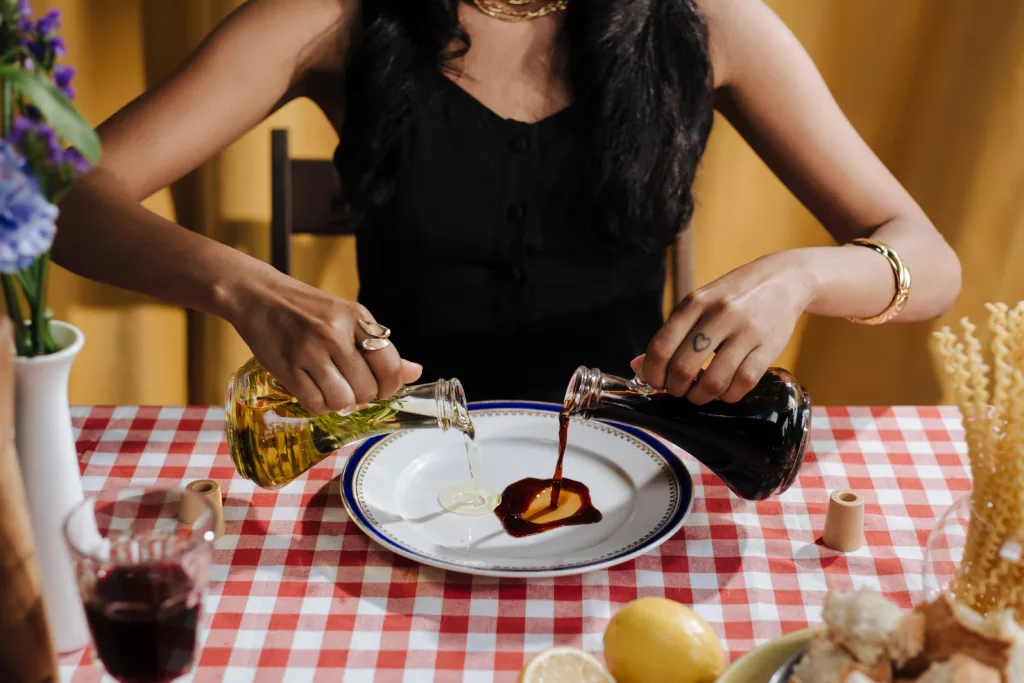

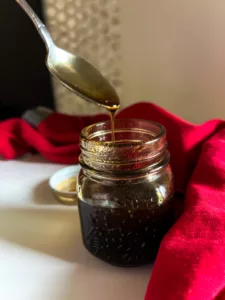


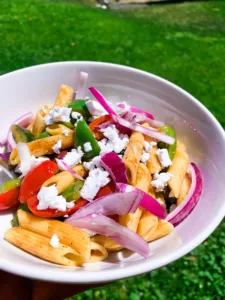

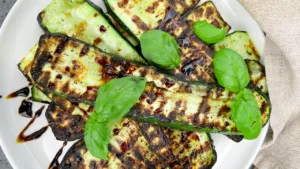
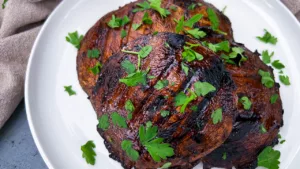
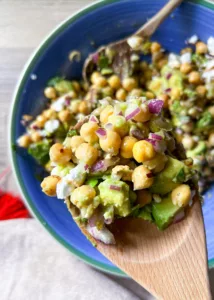
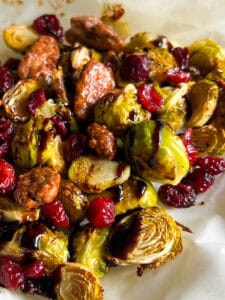
Great thank you for all the info looking forward to trying out some of your balsamic vinegar recipes. The salads and dressings look succulent.
Thank you so much Jamie!